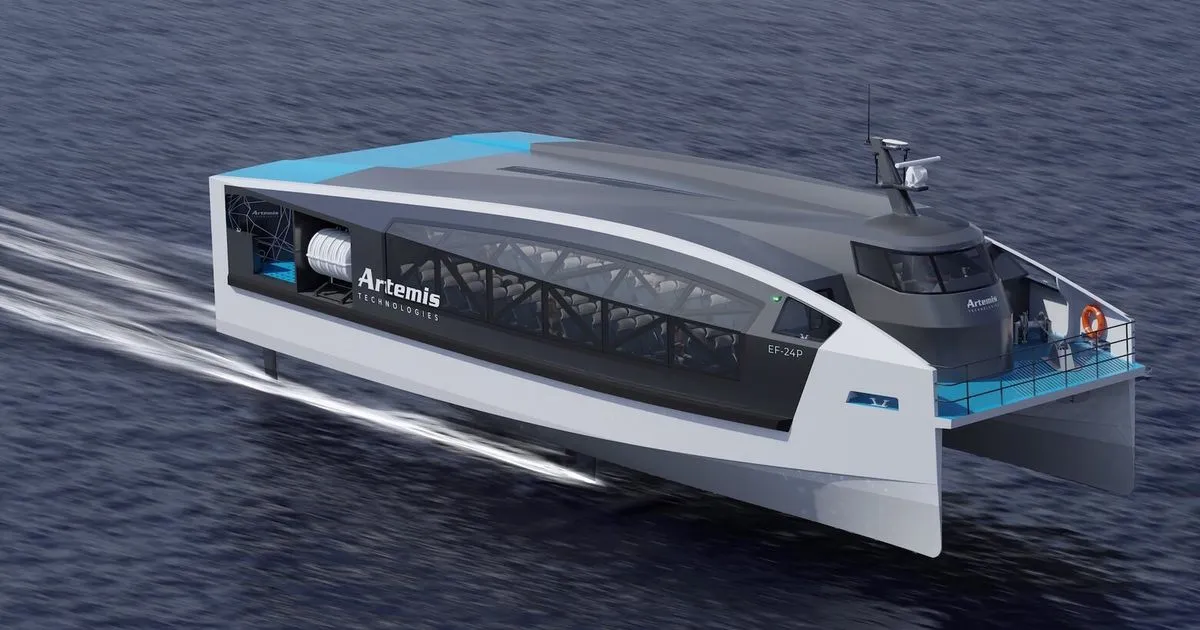
In the 1800s, ferries were a vital mode of transportation, with steamboats populating the shorelines of bustling coastal cities. However, the rise of cars and trains led to a decline in ferry use. Today, as urban areas face increased congestion and cities work to revitalize their waterfronts, ferries are experiencing a remarkable comeback. “We see it as a blue superhighway that is still untapped,” remarked Geoff Symonds, chief operating officer of Uber Boat by Thames Clippers, a prominent ferry network based in London.
Commuters are increasingly turning to ferries for their transit needs due to the high satisfaction scores reported in customer surveys. Unlike other modes of public transit, ferries offer unique amenities such as spacious seating, bike storage, and stunning skyline views. Remarkably, ferry services were the first to return to their pre-pandemic ridership levels in major cities like New York, San Francisco, Stockholm, and Auckland. However, ferry operators are currently challenged by the demand for speed and sustainability in urban transport.
In response to these challenges, Stockholm has recently tested an innovative solution: the world’s first electric hydrofoil ferry, known as the P-12. Developed by the Swedish startup Candela, this cutting-edge vessel can accommodate 30 passengers and has drastically reduced commute times by nearly half compared to conventional diesel ferries, now taking just 30 minutes to travel an 11-mile route between the island of Ekero and City Hall in central Stockholm. Additionally, the P-12 emits 95% less pollution than traditional diesel models and consumes 80% less energy, according to SL, the Stockholm public transport authority.
Hydrofoil technology is gaining traction beyond just ferry systems; it is also making waves in the sports world. Recently, supporters of an electric race boat championship called E1 demonstrated their hydrofoil technology on the River Thames in London to promote the upcoming season. One of the key benefits of hydrofoils is their potential to protect urban waters and coastal ecosystems. Proponents argue that their sustainability and efficiency will attract more commuters.
Gustav Hasselskog, founder and CEO of Candela, shared that he was inspired to create an energy-efficient maritime solution after realizing that his speedboat consumed 15 times more fuel than his car. “High-speed passenger ferries and boats are the least fuel-efficient mode of transit in the world because almost all energy is used to push away the water,” he explained. “If you convert to electric, you need massive amounts of batteries, which are expensive and have limited range. The only way to go far and fast on the same battery is when you hydrofoil.”
Hydrofoils are wing-like structures attached under a boat's hull that lift the craft above the water as it gains speed, similar to how airplane wings function in the air. This innovative design significantly reduces water friction and drag, enabling faster and more energy-efficient travel. According to Jakob Kuttenkeuler, a professor of naval architecture at the KTH Royal Institute of Technology in Stockholm and inventor of the Efoil, hydrofoil technology was prevalent in marine transport during the 1980s but fell out of favor due to high operational costs. However, advancements in digitalization, composite materials, and sensor technology are contributing to a renaissance in hydrofoil usage, making it an opportune moment in the push for electrification.
The electric hydrofoil offers numerous advantages beyond environmental benefits. Its batteries are relatively compact, eliminating the need for extensive charging infrastructure. Furthermore, hydrofoils create minimal waves, preventing shoreline erosion and disturbances for windsurfers and moored boats. Because they are stabilized by a computer system and hover above the waves, passengers are less likely to experience seasickness.
After successfully launching its first leisure hydrofoils in 2019 and 2022, Candela is focusing on scaling up with the P-12 for public transit. Hasselskog estimates that the market for electric ferries could reach nearly $8 billion annually, with Asia presenting the largest potential market, followed by Europe and North America. Interest in hydrofoil technology is also blooming in the United States, where entrepreneur Ryan Meinzer aims to alleviate congestion around Lake Tahoe by introducing a P-12 ferry for skiers by next year. However, to enter the U.S. market, manufacturers must comply with the Jones Act, which mandates that ships transporting goods, including passengers, must be built in the United States.
Meanwhile, Artemis Technologies, an electric hydrofoil ferry manufacturer based in Belfast, Ireland, plans to collaborate with Delta Marine, a shipyard in Seattle, to produce electric hydrofoil ferries for the Puget Sound. Co-founder David Tyler revealed that they are developing a 150-passenger vessel, the EF-24, set to launch this year on a demonstration route between Belfast and Bangor, Ireland. While the EF-24 is 50% more expensive than a diesel ferry, Tyler noted that long-term fuel savings could amount to $27 million compared to traditional diesel vessels.
As ferry technology undergoes a significant transformation, Seamus Murphy, executive director of San Francisco Bay Ferry, highlighted the organization’s commitment to sustainability, aiming to operate the cleanest fleet in the United States. To achieve this, San Francisco Bay Ferry has ordered five vessels modeled after Medstraum, the world’s first battery-driven fast ferry. Murphy explained that half of their budget will be allocated to establishing necessary landside charging infrastructure. The organization is also exploring the use of hydrogen fuel cell electric ferries and sourcing green hydrogen for future longer routes. However, challenges remain in securing a consistent supply of green hydrogen, indicating that improving ferry energy efficiency may be the more practical solution.